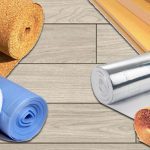In a wooden house, the weakest place is traditionally the seams. Even if the interventional heater is selected correctly, heat loss cannot be avoided. Recently, however, the technology of warm seam has appeared, which is used more often. A sealant cannot become a full-fledged replacement for a heater, however, sealing will also be useful. The insulation and sealant should not be in contact, otherwise the materials will crack over time.

Traditional insulation methods have three significant disadvantages:
- Birds can drag out the placeholder;
- Materials have to be regularly changed; insects can enter the premises through the insulation;
- Moisture.

The "warm seam" system makes it possible to improve current technology. In this case, a special sealant is applied over the cord and insulation. Then sealant is smoothed. It becomes completely invisible after painting, while protecting the seams from moisture and wind.

After the initial insulation of the seams, you will need to do a little work. This will require a heat-insulating cord, as well as an acrylic sealant designed for working with wood. Excess material is removed with a brush. You will need to prepare two spatulas of different sizes and a gun (preferably pneumatic, but you can also manual). Sealant is most often sold in buckets or tubes. The volume in the first case is fifteen to twenty-five kilograms, in the second - six hundred milliliters. The color of the sealant is chosen according to the painting.

There are a lot of manufacturers' options; German and American products are higher in cost and quality. A sealant in a tube is more expensive. Its volume is enough for four to six meters. Much depends, of course, on the experience of the master, as well as on the roughness and thickness of the seam. Three times cheaper to finish the seam with sealant costs when buying material in a bucket.

Under the sealant, a heat-insulating cord is laid in the seam, which should fill the free inter-crown space. Use sealant to fill does not make any sense, and much more expensive. It is better if it acts only as the upper fixing layer. The sealant is applied using a gun as a mounting foam. To indicate the boundaries of the seam, you can use mounting tape. Wet rags are best to immediately remove excess sealant that has fallen on the crowns. The seam layer is smoothed out with a small brush dipped in water. The final alignment is done with a slightly damp cloth.




-
 How to Lighten a Blue Lumber
How to Lighten a Blue Lumber
-
 What materials can be used to decorate the ceiling in a children's room?
What materials can be used to decorate the ceiling in a children's room?
-
 The use of natural stone in construction
The use of natural stone in construction
-
 Textured wallpaper in the interior
Textured wallpaper in the interior
-
 Border ribbon for wallpaper
Border ribbon for wallpaper
-
 How to choose acrylic paint for walls
How to choose acrylic paint for walls
-
 Pipes that may burst due to frost
Pipes that may burst due to frost
-
 Why do people love the lawns in their private house
Why do people love the lawns in their private house
-
 How to choose the right carpet for your home
How to choose the right carpet for your home
-
 Gypsum 3D panels for walls: advantages and disadvantages
Gypsum 3D panels for walls: advantages and disadvantages
-
 What are the disadvantages of PVC floor tiles
What are the disadvantages of PVC floor tiles
-
 What is the optimal thickness of the substrate for the laminate
What is the optimal thickness of the substrate for the laminate
New publications are published daily on our channel in Yandex. Zen
Go to Yandex. Zen


